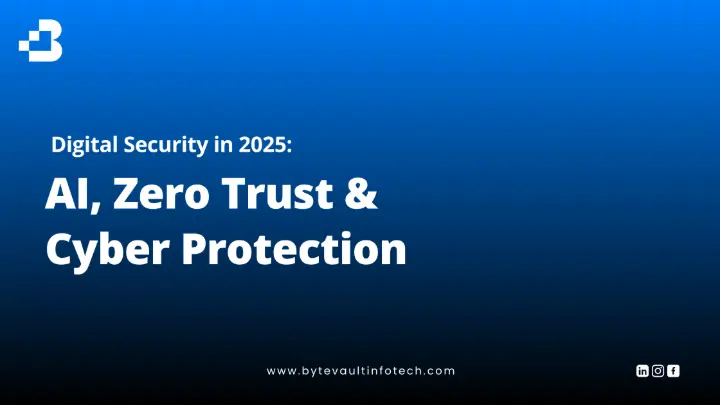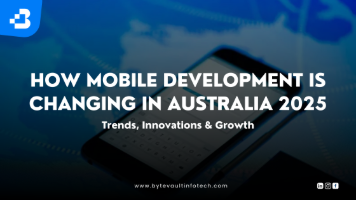
Introduction
In October 2025, over 6.2 billion people are connected to the internet—that's nearly 78% of the global population. Every single day, humans create approximately 402.74 million terabytes of data. But here's the alarming truth: a cyberattack occurs every 39 seconds, and cybercrime is projected to cost the world $10.5 trillion annually this year alone.
Whether you're a business owner protecting customer data, a developer building secure applications, or simply someone who shops online and uses social media, digital security is no longer optional—it's essential. The rise of artificial intelligence has created both unprecedented opportunities and sophisticated cyber threats that evolve faster than traditional defenses can handle.
This comprehensive guide will walk you through everything you need to know about digital security in 2025—from understanding modern threats to implementing practical protection strategies that actually work.
Understanding Digital Security: What Has Changed?
The Digital Transformation Acceleration
The COVID-19 pandemic fundamentally changed how the world operates. Remote work, cloud computing, and digital-first business models became the norm rather than the exception. By 2025, 82% of enterprise workloads now run in cloud environments, and the average person interacts with over 15 connected devices daily.
This massive digital adoption created an exponentially larger attack surface for cybercriminals. Your smart refrigerator, fitness tracker, home security camera, and even your car are now potential entry points for cyber threats.
AI and AGI: The Double-Edged Sword
Artificial intelligence has revolutionized cybersecurity—but it's also supercharged cybercrime. In 2025, we're witnessing:
-
AI-powered phishing attacks that can perfectly mimic your colleague's writing style and even clone their voice
-
Deepfake technology used for sophisticated fraud and social engineering
-
Automated vulnerability discovery that finds security weaknesses faster than humans can patch them
-
Early AGI systems (Artificial General Intelligence) being developed for advanced threat detection and response
The good news? The same AI technology is being deployed defensively, enabling real-time threat detection and predictive security measures that were science fiction just five years ago.
The Most Critical Cyber Threats in 2025
1. AI-Enhanced Social Engineering and Phishing
Traditional phishing emails with poor grammar and obvious scams are nearly extinct. Modern phishing attacks use:
-
Large language models to craft contextually perfect emails
-
Voice cloning for vishing (voice phishing) attacks
-
Video deepfakes for business email compromise
-
Real-time data scraping from social media to personalize attacks
Real-world example: In March 2025, a finance director at a multinational company transferred $25.6 million after a video conference call with what appeared to be the CFO and other colleagues—all deepfake AI replicas.
2. Ransomware-as-a-Service (RaaS)
Ransomware has become industrialized. Cybercriminals don't need technical skills anymore—they can simply "rent" ransomware toolkits with customer support, payment processing, and even affiliate programs. Ransomware attacks increased by 73% from 2024 to 2025, with average ransom demands exceeding $2.3 million.
3. Supply Chain Attacks
Rather than attacking fortified primary targets, hackers compromise less-secure third-party vendors and suppliers. The SolarWinds-style attacks have evolved significantly, now targeting:
Software dependencies and open-source libraries
Cloud service providers
Managed service providers (MSPs)
IoT device manufacturers
4. Quantum Computing Threats (Emerging)
While still in early stages, quantum computers pose a future threat to current encryption standards. Organizations are beginning "harvest now, decrypt later" strategies—stealing encrypted data today to decrypt once quantum computing matures.
5. Identity-Based Attacks
With perimeter security becoming obsolete, attackers focus on stealing credentials. 89% of breaches in 2025 involve compromised credentials through:
Credential stuffing (using leaked passwords from other breaches)
-
Token theft and session hijacking
-
Privilege escalation
-
Privilege escalation
-
Insider threats
Modern Digital Security Strategies That Actually Work
1. Zero Trust Architecture: Trust Nothing, Verify Everything
The old "castle and moat" security model is dead. Zero Trust assumes breach and requires continuous verification:
Core principles:
-
Verify explicitly for every access request
-
Use least-privilege access (minimum necessary permissions)
-
Assume breach and minimize blast radius
Practical implementation:
-
Multi-factor authentication (MFA) everywhere—not just for login
-
Micro-segmentation of networks
-
Continuous identity verification
-
Context-aware access policies
For non-technical readers: Think of it like a high-security facility where even employees need to verify their identity at every door, not just the entrance.
2. AI-Powered Threat Detection and Response
Modern cybersecurity leverages artificial intelligence for:
Behavioral analytics: AI establishes baseline "normal" behavior for users and systems, then flags anomalies. If your account suddenly starts downloading massive amounts of data at 3 AM from a foreign country, AI security systems detect this instantly.
Predictive threat intelligence: Machine learning analyzes global threat patterns to predict and prevent attacks before they happen.
Automated response: When threats are detected, AI can automatically isolate infected systems, block malicious traffic, and contain damage within milliseconds—faster than any human security team.
3. Identity-First Security
Since identities are the new perimeter, modern security centers on:
-
Passwordless authentication: Biometrics, hardware keys (FIDO2), and magic links
-
Adaptive authentication: Risk-based analysis that requires additional verification for suspicious activity
-
Privileged access management (PAM): Special controls for high-value accounts
-
Just-in-time access: Temporary permissions that expire automatically
4. Data-Centric Security and Encryption
Protecting data wherever it lives:
-
Encryption at rest: Data stored in databases and file systems
-
Encryption in transit: Data moving across networks (TLS 1.3 minimum)
-
End-to-end encryption: Only sender and recipient can decrypt
-
Homomorphic encryption (emerging): Computing on encrypted data without decrypting it
-
Data loss prevention (DLP): Automated detection and blocking of sensitive data exfiltration
5. Privacy by Design and Compliance
With regulations like GDPR (Europe), CCPA (California), LGPD (Brazil), and the 2024 AI Act (EU), privacy isn't just ethical—it's legally mandatory.
Key practices:
-
Data minimization (collect only what's necessary)
-
Purpose limitation (use data only for stated purposes)
-
Consent management
-
Right to deletion and data portability
-
Privacy impact assessments
For businesses: Non-compliance fines can reach €20 million or 4% of global revenue, whichever is higher.
Practical Digital Security Checklist for Everyone
For Individuals and Professionals
-
Enable multi-factor authentication on all accounts (email, banking, social media)
-
Use a password manager (1Password, Bitwarden, LastPass) with unique passwords for each account
-
Keep software updated – enable automatic updates for operating systems, browsers, and apps
-
Verify before clicking – hover over links, check sender addresses, be skeptical of urgent requests
-
Secure your home network – change default router passwords, use WPA3 encryption, separate IoT devices
-
Use VPN on public Wi-Fi – encrypt your internet traffic on untrusted networks
-
Regular backups – follow the 3-2-1 rule (3 copies, 2 different media, 1 offsite)
-
Monitor financial accounts – enable transaction alerts and check statements regularly
For Business Owners and Organizations
-
Conduct security awareness training – humans remain the weakest link; train employees quarterly
-
Implement zero trust architecture – start with critical assets and expand
-
Deploy endpoint detection and response (EDR) – CrowdStrike, SentinelOne, Microsoft Defender
-
Use cloud security posture management (CSPM) – identify misconfigurations automatically
-
Establish incident response plan – know exactly what to do when (not if) a breach occurs
-
Regular penetration testing – hire ethical hackers to find vulnerabilities before criminals do
-
Vendor security assessments – ensure third parties meet your security standards
-
Cyber insurance – financial protection against breach costs and business interruption
For Developers and Technical Teams
-
Shift security left (DevSecOps) – integrate security from the first line of code
-
Dependency scanning – use Snyk, Dependabot to identify vulnerable libraries
-
Static and dynamic analysis – SAST and DAST tools in CI/CD pipelines
-
Secrets management – never hardcode credentials; use HashiCorp Vault or cloud providers' solutions
-
API security – implement authentication, rate limiting, input validation, and schema validation
-
Container security – scan images, use minimal base images, implement runtime protection
-
Secure coding practices – follow OWASP guidelines, conduct code reviews
The Future of Digital Security: What's Coming Next
Post-Quantum Cryptography
NIST has standardized quantum-resistant encryption algorithms, and migration is beginning. Organizations are implementing crypto-agility—the ability to quickly swap encryption algorithms when needed.
Autonomous Security Systems
Advanced AI and early AGI systems are moving toward fully autonomous security that can:
Identify unknown threats (zero-day vulnerabilities)
-
Make defensive decisions without human intervention
-
Adapt to new attack patterns in real-time
-
Coordinate defenses across entire ecosystems
Decentralized Identity
Blockchain-based self-sovereign identity systems give individuals control over their digital identities, reducing dependence on centralized identity providers that become high-value targets.
Security Regulation Expansion
Expect more jurisdictions to implement mandatory breach disclosure, security by design requirements, and executive accountability for cybersecurity failures.
Conclusion: Security is a Journey, Not a Destination
Digital security in 2025 is more complex than ever, but also more accessible. The tools, frameworks, and knowledge needed to protect yourself and your organization are readily available—the key is taking action.
Remember these fundamental truths:
-
1. Perfect security doesn't exist – focus on reducing risk to acceptable levels
-
2. Security is everyone's responsibility – not just the IT department
-
3. Stay informed – threats evolve daily; continuous learning is essential
-
4. Start small, but start now – implementing basic protections today is better than planning perfect security for tomorrow
The digital world offers incredible opportunities for innovation, connection, and growth. With the right security mindset and practices, you can enjoy these benefits while minimizing risks.
Frequently Asked Questions (FAQ)
Q1: What is the most important digital security measure in 2025?
Multi-factor authentication (MFA) is the single most important security measure, preventing 99.9% of automated attacks even if passwords are compromised.


